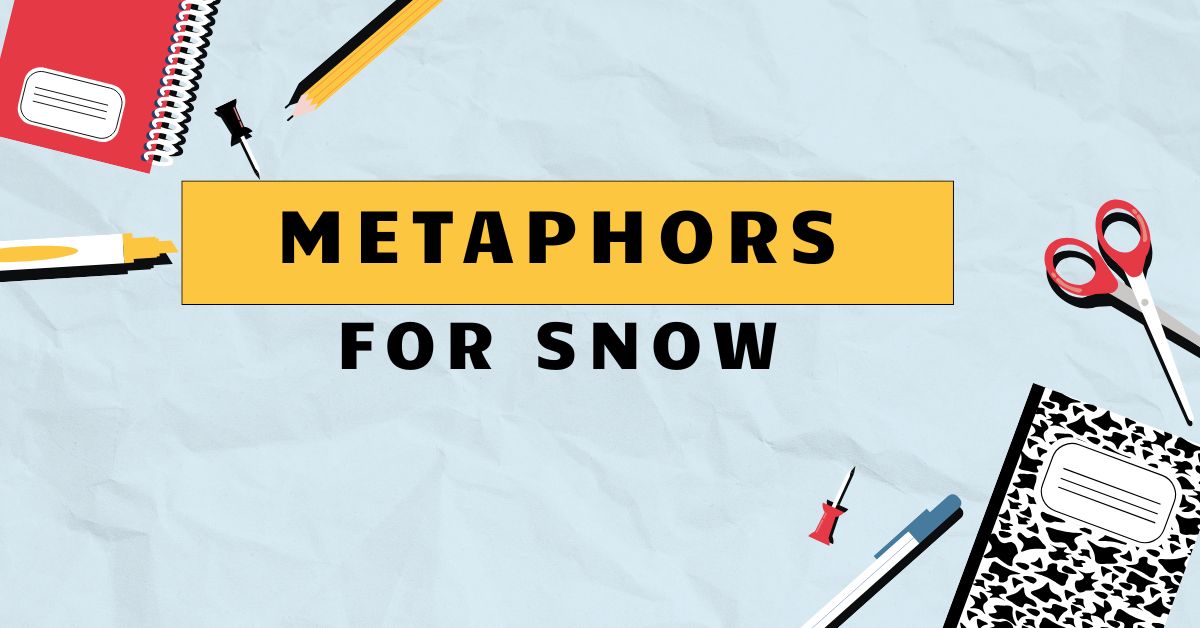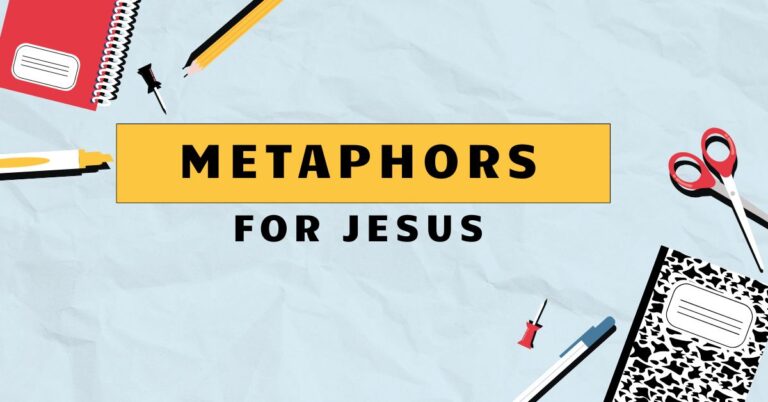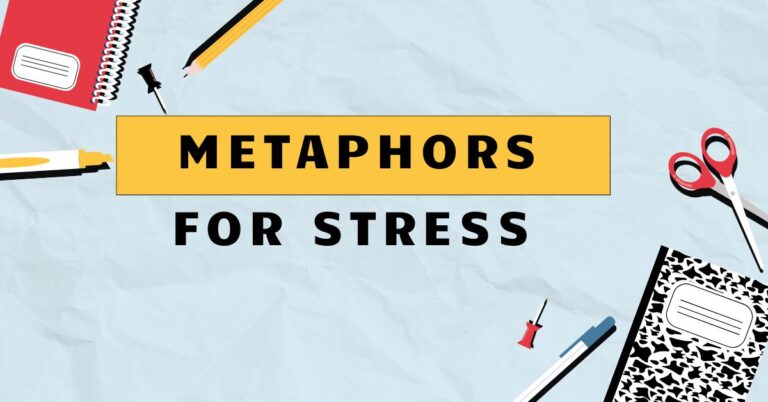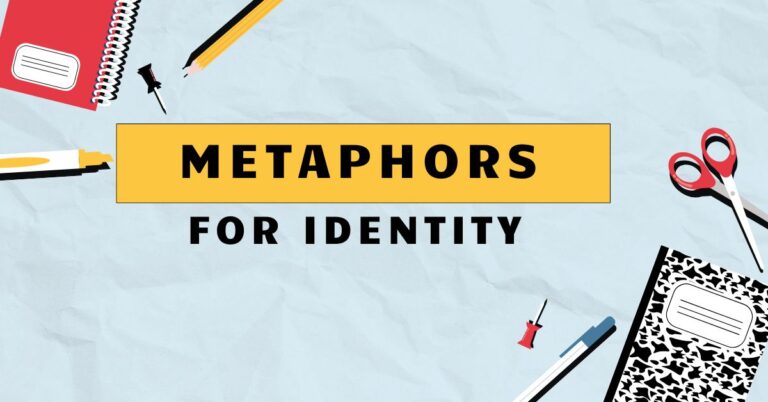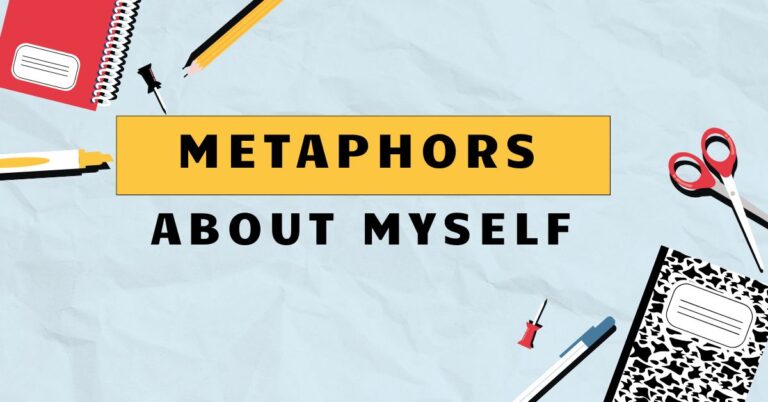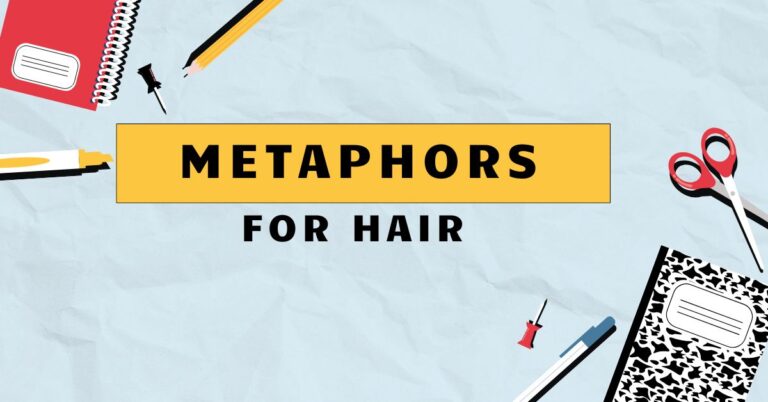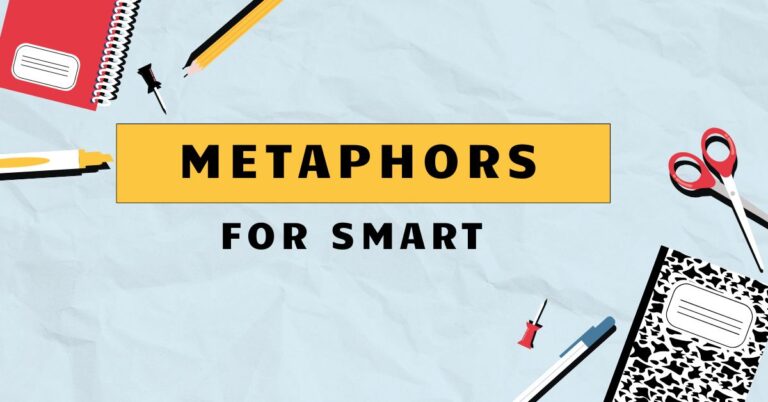39 Metaphors for Snow: A Comprehensive Guide to Figurative Language
Understanding metaphors is crucial for mastering English, as they add depth and color to language. Metaphors are not just decorative; they are fundamental to how we understand and communicate complex ideas.
This guide focuses on metaphors for snow, providing a detailed exploration of their structure, usage, and impact. This article will benefit students, writers, and anyone eager to enhance their command of figurative language and appreciate the nuances of English expression.
Table of Contents
- Introduction
- Definition of Metaphor
- Structural Breakdown of Metaphors
- Types of Snow Metaphors
- Examples of Snow Metaphors
- Usage Rules for Metaphors
- Common Mistakes with Metaphors
- Practice Exercises
- Advanced Topics in Metaphor Usage
- Frequently Asked Questions
- Conclusion
Definition of Metaphor
A metaphor is a figure of speech that directly compares two unrelated things, asserting that one thing *is* another. Unlike similes, which use “like” or “as” to make a comparison, metaphors create a direct equivalence.
This equivalence is not literal but rather suggestive, aiming to reveal a hidden similarity or create a vivid image in the reader’s mind. Metaphors are essential for effective communication and creative writing, allowing writers and speakers to convey complex ideas and emotions in a concise and impactful way.
They enrich language by adding layers of meaning and inviting the audience to engage with the text on a deeper level.
In essence, a metaphor transfers qualities or characteristics from one subject to another, creating a new understanding of both. This transfer is based on perceived similarities, often focusing on abstract qualities or emotional responses.
The power of a metaphor lies in its ability to transform our perception of reality, offering fresh perspectives and enhancing our understanding of the world around us. By using metaphors, we can make abstract concepts more concrete and relatable, making complex ideas more accessible to a wider audience.
Structural Breakdown of Metaphors
Metaphors typically consist of two main elements: thetenorand thevehicle. The tenor is the subject being described, while the vehicle is the thing to which the tenor is being compared.
The effectiveness of a metaphor depends on the relationship between these two elements and how well the vehicle illuminates the tenor. A strong metaphor creates a clear and compelling connection, enhancing the reader’s understanding and appreciation of the subject.
Consider the metaphor “Snow is a blanket.” Here, “snow” is the tenor, and “blanket” is the vehicle. The metaphor suggests that snow, like a blanket, covers and provides a sense of warmth and protection (even though literally snow is cold).
The connection is not literal; snow is not actually a blanket, but the comparison highlights its covering effect. This metaphorical construction allows us to perceive snow in a new light, emphasizing its protective and enveloping qualities.
Understanding this structural breakdown is crucial for both creating and interpreting metaphors effectively.
Types of Snow Metaphors
Snow metaphors can be categorized based on the aspects of snow they emphasize. These categories include descriptive metaphors, emotional metaphors, and metaphors focusing on snow’s impact.
Each type serves a different purpose, highlighting various facets of the snow experience.
Descriptive Metaphors
Descriptive metaphors focus on the physical characteristics of snow, such as its appearance, texture, and movement. These metaphors often use imagery to create a vivid picture of snow in the reader’s mind.
Examples include comparing snow to diamonds, cotton, or feathers.
Emotional Metaphors
Emotional metaphors explore the feelings and associations evoked by snow. These metaphors often connect snow to emotions like peace, purity, isolation, or joy.
They delve into the psychological impact of snow, reflecting its ability to influence our mood and perceptions.
Metaphors for Snow’s Impact
These metaphors highlight the effects snow has on the environment and human activities. They can describe how snow transforms landscapes, disrupts routines, or creates opportunities for recreation.
Examples include metaphors that portray snow as a sculptor, a disruptor, or a playground.
Examples of Snow Metaphors
The following tables provide various examples of snow metaphors, categorized by the aspect of snow they emphasize. These examples illustrate the diverse ways in which snow can be metaphorically represented, highlighting its visual, textural, emotional, and transformative qualities.
Visual Metaphors
These metaphors focus on the appearance of snow, comparing it to visually striking objects or substances. They aim to create a vivid image of snow in the reader’s mind.
The table below provides a range of visual metaphors for snow, offering different perspectives on its appearance. Each metaphor highlights a specific visual quality, such as brightness, color, or shape.
| Metaphor | Explanation |
|---|---|
| Snow is a diamond dust. | Emphasizes the sparkling, crystalline quality of snow. |
| The landscape was a canvas of white. | Highlights the uniform color and expansive coverage of snow. |
| Snowflakes are tiny stars falling from the sky. | Compares the shape and rarity of snowflakes to stars. |
| The snow-covered trees were ghosts in the moonlight. | Suggests a spectral, ethereal quality. |
| Snow is a pearl blanket draped over the fields. | Emphasizes the smooth, lustrous appearance of snow. |
| The city was a sugar-coated dream. | Highlights the sweet, pristine appearance of a snow-covered cityscape. |
| Snow is confetti thrown by winter’s party. | Compares the scattered, festive appearance of falling snow to confetti. |
| The mountains wore white crowns of snow. | Highlights the majestic, crowning effect of snow on mountain peaks. |
| Snow is a mirror reflecting the winter sky. | Emphasizes the reflective quality of a snow-covered surface. |
| The fields were seas of white. | Highlights the vast, undulating expanse of snow-covered fields. |
| Snow is a silver shroud covering the earth. | Suggests a quiet, reflective covering. |
| The garden became a sculpture park of snow-covered forms. | Highlights the artistic shapes created by snow accumulation. |
| Snowflakes are lace falling from the heavens. | Emphasizes the intricate, delicate patterns of snowflakes. |
| The snow-covered roofs looked like icing on gingerbread houses. | Suggests a whimsical, festive appearance. |
| Snow is a white whisper across the land. | Highlights the quiet and gentle nature of the snow. |
| The frosted trees are crystal chandeliers. | Highlights the intricate, sparkling nature of ice covered trees. |
| Snow is a frozen dream. | Suggests a surreal, beautiful, almost impossible landscape. |
| The snow-covered branches are ivory arms. | Highlights the smooth, white appearance of the snow-covered branches. |
| Snow is a blank page ready to be written on. | Emphasizes the newness and potential of a snow covered landscape. |
| The landscape transformed into a winter wonderland. | Highlights the magical, beautiful nature of a snow-covered landscape. |
| Snow is a silent film playing out across the horizon. | Suggests a quiet, visually stunning event. |
Textural Metaphors
These metaphors focus on the tactile qualities of snow, comparing it to substances with similar textures. They aim to evoke a sensory experience of touching or interacting with snow.
The following table presents examples of textural metaphors for snow, each emphasizing different aspects of its feel, from soft and fluffy to cold and hard.
| Metaphor | Explanation |
|---|---|
| Snow is cotton underfoot. | Emphasizes the soft, yielding texture of fresh snow. |
| The snow was a crisp meringue. | Highlights the light, airy texture of certain types of snow. |
| Snowflakes are icy kisses on your cheek. | Suggests a brief, cold, but gentle sensation. |
| The snow-covered ground was a velvet carpet. | Emphasizes the smooth, luxurious feel of the snow. |
| Snow is powdered sugar dusting the trees. | Highlights the fine, light texture of snow. |
| The icy wind was a biting whip. | Compares the sting of the wind to a painful lash. |
| Snow is a crunchy blanket covering the world. | Highlights the sound and feel of walking on packed snow. |
| The snow felt like sandpaper under the sled. | Emphasizes the rough, abrasive texture of icy snow. |
| Snow is a soft caress on the skin. | Suggests a gentle, soothing sensation. |
| The snow-covered branches were icy fingers reaching out. | Highlights the cold, grasping feel of icy branches. |
| Snow is a frigid embrace. | Emphasizes the cold, enveloping sensation of being surrounded by snow. |
| The snow had the consistency of packed flour. | Highlights the dense, moldable texture of the snow. |
| Snowflakes are feathery brushes painting the landscape white. | Emphasizes the light, delicate touch of falling snow. |
| The frozen lake was a sheet of glass. | Highlights the smooth, hard texture of the ice. |
| Snow is cold velvet. | Emphasizes the contrast between the coldness and the soft texture. |
| The snow has a silky touch. | Highlights the smooth and delicate feel of the snow. |
| Snow is like tiny needles pricking your skin. | Emphasizes the sharp, cold sensation of snowflakes on skin. |
| The snow is a fluffy cloud that fell from the sky. | Highlights the soft, airy texture of the snow. |
| Snow is a icy sculpture. | Emphasizes the hard, cold, and shaped texture of ice. |
| The snow felt like a million tiny beads under my feet. | Highlights the individual, granular texture of the snow. |
| Snow is a frozen whisper. | Captures the silent, yet palpable, texture of the snow. |
Emotional Impact Metaphors
These metaphors focus on the emotional and psychological effects of snow, connecting it to feelings, moods, and states of mind. They explore how snow influences our emotions and perceptions.
The table below provides metaphors that describe the emotional impact of snow, ranging from feelings of peace and tranquility to isolation and melancholy.
| Metaphor | Explanation |
|---|---|
| Snow is a blanket of silence. | Emphasizes the quiet, peaceful atmosphere created by snow. |
| The snow brought a sense of isolation. | Highlights the feeling of being cut off from the world. |
| Snow is a reminder of winter’s grip. | Suggests a feeling of confinement and cold. |
| The snowfall was a curtain of melancholy. | Emphasizes the somber, reflective mood evoked by snow. |
| Snow is a symbol of purity. | Highlights the clean, pristine associations of snow. |
| The silence of the snow was a healing balm. | Emphasizes the restorative effect of quiet, snowy landscapes. |
| Snow is a canvas for new beginnings. | Suggests a sense of possibility and renewal. |
| The snow-covered world was a dreamscape of serenity. | Highlights the peaceful, dreamlike quality of snowy landscapes. |
| Snow is a whisper of forgotten memories. | Suggests a connection to the past and nostalgic feelings. |
| The snow created a cocoon of tranquility. | Emphasizes the feeling of being sheltered and at peace. |
| Snow is a stark reminder of mortality. | Suggests a contemplation of life’s fleeting nature. |
| The snow-covered world was a portrait of solitude. | Highlights the feeling of being alone and introspective. |
| Snow is a song of winter’s sorrow. | Emphasizes the melancholic beauty of the season. |
| The snowfall brought a sense of childlike wonder. | Highlights the joy and excitement associated with snow. |
| Snow is a peaceful sigh. | Emphasizes the calmness and tranquility that snow can bring. |
| The snow is a frozen tear. | Highlights the melancholy and sadness that winter can evoke. |
| Snow is winter’s lullaby. | Suggests a soothing and calming effect. |
| The snow is a mirror to the soul. | Emphasizes the introspective feelings that snow can bring. |
| Snow is a reminder of nature’s power. | Highlights the awe-inspiring force of nature. |
| The snow brings a feeling of stillness. | Emphasizes the quiet and serene atmosphere created by snow. |
| Snow is a blanket of introspection. | Encourages reflection and contemplation during winter. |
Weather Condition Metaphors
These metaphors describe the conditions during snowfall, focusing on the atmosphere and environment surrounding the snow.
The following table presents examples of metaphors that describe weather conditions during snowfall, focusing on aspects such as visibility, temperature, and sound.
| Metaphor | Explanation |
|---|---|
| The blizzard was a howling beast. | Emphasizes the fierce, aggressive nature of the storm. |
| The wind was a frozen knife. | Highlights the sharp, cutting sensation of the cold wind. |
| The snow fell in a silent cascade. | Emphasizes the quiet, continuous flow of the snowfall. |
| The air was a frigid embrace. | Highlights the cold, enveloping sensation of the winter air. |
| The snowstorm was a whiteout curtain. | Emphasizes the reduced visibility and sense of enclosure. |
| The sky was a grey shroud. | Highlights the overcast, somber atmosphere during snowfall. |
| The temperature was a biting cold. | Emphasizes the intense, painful sensation of the cold. |
| The falling snow was a whispering chorus. | Highlights the soft, murmuring sound of the snowfall. |
| The weather was a frozen fist. | Emphasizes the harsh, unforgiving nature of the winter conditions. |
| The snow fell like a gentle rain. | Highlights the soft, continuous quality of the snowfall. |
| The blizzard was a furious dance of wind and snow. | Emphasizes the chaotic, energetic movement of the storm. |
| The icy air was a sting on the skin. | Highlights the sharp, prickling sensation of the cold air. |
| The snowstorm was a white veil obscuring the world. | Emphasizes the reduced visibility and sense of mystery. |
| The winter sky was a slate of despair. | Highlights the somber, oppressive atmosphere during snowfall. |
| The air was a frozen breath. | Highlights the still and frigid nature of the air. |
| The snow was a silent symphony. | Emphasizes the quiet beauty of the snowfall. |
| The snow felt like a frozen tear. | Highlights the melancholy and sadness that winter can evoke. |
| The snowstorm was a wild beast. | Highlights the untamed and forceful nature of the blizzard. |
| The wind was a frigid conductor. | Emphasizes the way the wind orchestrates the snowfall. |
| The snow fell like a dream. | Highlights the surreal and ethereal quality of the snowfall. |
| The weather was a cold embrace. | Emphasizes the all-encompassing coldness of the winter conditions. |
Transformative Metaphors
These metaphors describe the transformative effect of snow on the landscape and environment, highlighting how snow alters the appearance and character of its surroundings.
The following table showcases metaphors that illustrate the transformative power of snow, emphasizing how it changes the landscape, covers imperfections, and creates new opportunities for recreation.
| Metaphor | Explanation |
|---|---|
| Snow is a great eraser. | Emphasizes how snow covers and conceals the details of the landscape. |
| The snow transformed the city into a winter wonderland. | Highlights the magical, beautiful effect of snow on the urban environment. |
| Snow is a sculptor shaping the hills. | Emphasizes how snow alters the contours and forms of the landscape. |
| The snowfall was a blank canvas for children’s footprints. | Highlights the new opportunities for play and creation. |
| Snow is a restorative blanket for the earth. | Emphasizes how snow protects and nourishes the soil. |
| The snow turned the ordinary into the extraordinary. | Highlights how snow elevates the mundane to something special. |
| Snow is a magician changing the scenery overnight. | Emphasizes the sudden, dramatic transformation caused by snowfall. |
| The snow-covered trees were transformed into sculptures. | Highlights the artistic effect of snow on natural forms. |
| Snow is a great equalizer covering all in white. | Emphasizes how snow creates a sense of uniformity and peace. |
| The snowfall was a new beginning for the landscape. | Highlights the sense of renewal and possibility after snowfall. |
| Snow is a painter adding shades of white to the world. | Emphasizes how snow alters the color palette of the environment. |
| The snow created a playground for winter activities. | Highlights the new opportunities for recreation and fun. |
| Snow is a reset button for the environment. | Emphasizes how snow cleanses and renews the landscape. |
| The snow-covered world was a stage for winter dramas. | Highlights the dynamic, engaging quality of snowy landscapes. |
| Snow is a great concealer. | Emphasizes how snow hides the imperfections of the world. |
| The snow transformed the world into a dreamscape. | Highlights the surreal and beautiful effect of snow. |
| Snow is a natural architect. | Emphasizes how snow shapes and molds the landscape. |
| The snow turned the landscape into a frozen canvas. | Highlights the potential for artistic expression in the snow. |
| Snow is a great healer. | Emphasizes how snow can bring tranquility and peace. |
| The snow created a new world. | Highlights the transformative and immersive effect of snow. |
| Snow is a silent artist. | Emphasizes the quiet and beautiful way snow transforms the world. |
Usage Rules for Metaphors
Using metaphors effectively requires careful consideration of context, audience, and purpose. A good metaphor should be both imaginative and relevant, enhancing understanding without causing confusion.
Avoid mixed metaphors, where the comparison becomes illogical or contradictory. Ensure the tenor and vehicle share a clear and compelling connection, and be mindful of cultural connotations that might influence interpretation.
Consistency is key.Once you establish a metaphorical framework, maintain it throughout your writing. Shifting metaphors abruptly can disorient the reader and weaken your message.
Also, avoid overused or clichéd metaphors, as they lack originality and impact. Strive for fresh and inventive comparisons that offer new insights and perspectives.
Consider the tone and style of your writing, and choose metaphors that align with your overall message. A well-chosen metaphor can elevate your writing, making it more engaging, memorable, and impactful.
Common Mistakes with Metaphors
One common mistake is using mixed metaphors, which combine unrelated images and create confusion. For example, saying “He nipped that idea in the bud and then ran with it” mixes two different metaphors (stopping something early and pursuing something actively), resulting in a nonsensical image.
Another frequent error is usingclichéd metaphors, which are overused and lack originality. Instead of saying “Snow is a blanket,” try something more creative and specific, like “Snow is a pearl blanket draped over the fields.” Finally, ensure your metaphor isappropriate for your audience and context.
A metaphor that works in one situation might be confusing or inappropriate in another.
Here are some examples of common mistakes with metaphors, along with corrections:
| Incorrect | Correct | Explanation |
|---|---|---|
| The project is a rollercoaster ride heading for the iceberg. | The project is a rollercoaster ride. / The project is a ship heading for an iceberg. | Avoid mixing unrelated metaphors. Choose one consistent image. |
| Snow is a white blanket (cliché). | Snow is a silent film playing out across the horizon. | Opt for fresh, original comparisons. |
| The CEO is a lion, but also a timid mouse. | The CEO is a lion in the boardroom. / The CEO is a timid mouse when dealing with regulators. | Ensure the metaphor is consistent and logical within the given context. |
Practice Exercises
Test your understanding of snow metaphors with these exercises. Identify the metaphors in the sentences and explain their meanings.
Then, create your own metaphors for snow based on different aspects of its appearance, texture, or impact.
Exercise 1: Identify the Metaphor
Read each sentence and identify the metaphor. Explain what two things are being compared and what qualities they share.
| Question | Answer |
|---|---|
| 1. The snow was a soft caress on her face. | Metaphor: “soft caress.” Snow is compared to a gentle touch, emphasizing its delicate feel. |
| 2. The city became a sugar-coated dream after the snowfall. | Metaphor: “sugar-coated dream.” The city is compared to a sweet, pristine dream, highlighting its beautiful, unreal appearance. |
| 3. The blizzard was a howling beast, tearing through the town. | Metaphor: “howling beast.” The blizzard is compared to a wild animal, emphasizing its fierce, destructive power. |
| 4. The snow-covered trees were ghosts in the pale moonlight. | Metaphor: “ghosts.” The trees are compared to ghostly figures, emphasizing their spectral, ethereal appearance. |
| 5. The silence of the snow was a healing balm to her troubled mind. | Metaphor: “healing balm.” The silence is compared to a soothing remedy, emphasizing its restorative effect. |
| 6. The snow is confetti thrown by winter’s party. | Metaphor: “confetti.” Snow is compared to confetti, emphasizing its scattered and festive appearance. |
| 7. The wind was a frozen knife, cutting through her layers of clothing. | Metaphor: “frozen knife.” The wind is compared to a sharp blade, emphasizing its biting, painful sensation. |
| 8. The snow is a great eraser, covering all the imperfections of the world. | Metaphor: “great eraser.” Snow is compared to something that hides or removes things, emphasizing concealment. |
| 9. The snow-covered fields were seas of white, stretching to the horizon. | Metaphor: “seas of white.” The fields are compared to vast bodies of water, emphasizing their expansive, uniform appearance. |
| 10. The snow is a blanket of silence, muffling the sounds of the city. | Metaphor: “blanket of silence.” Snow is compared to something that covers and quiets, emphasizing its muting effect. |
Exercise 2: Create Your Own Metaphors
Create ten original metaphors for snow, focusing on different aspects such as appearance, texture, sound, or emotional impact. Explain the meaning and intention behind each metaphor.
| Question | Answer |
|---|---|
| 1. Appearance | Snow is a scattered sky, blanketing the earth in its light. This metaphor emphasizes the beauty and lightness of the snow. |
| 2. Texture | Snow is a icy whisper, with a chill on the skin. This metaphor emphasizes the cold, delicate feel of snow. |
| 3. Sound | Snow is a silent hum, a peaceful blanket over the world. This metaphor emphasizes the quiet, calming effect of snow. |
| 4. Emotional Impact | Snow is winter’s dream, a moment of peace and reflection. This metaphor emphasizes the introspective feeling it evokes. |
| 5. Appearance | The snow is a mirror reflecting the world back to itself. This metaphor emphasizes the reflective, pristine qualities of snow. |
| 6. Texture | Snow is a million tiny diamonds, sparkling under the sun. This metaphor emphasizes the crystalline texture of the snow. |
| 7. Sound | Snowfall is the earth breathing quietly. This metaphor emphasizes the silent, calming effect of snow. |
| 8. Emotional Impact | Snow is a memory frozen in time. This metaphor emphasizes the nostalgic feelings that snow can evoke. |
| 9. Appearance | The snow is a symphony of white, playing across the fields. This metaphor emphasizes the visual beauty of the snow. |
| 10. Texture | Snow is a frozen lullaby, whispering secrets to the trees. This metaphor emphasizes the quiet, comforting presence of snow. |
Advanced Topics in Metaphor Usage
At an advanced level, explore the use ofextended metaphors, where a single metaphor is developed over multiple sentences or paragraphs. This technique can create a powerful and sustained image, deepening the reader’s understanding.
Also, investigate the use ofmixed metaphorsfor deliberate comedic effect or to create a sense of dissonance. Be aware that these techniques require careful execution to avoid confusion.
Consider also thecultural and historical contextof metaphors. Different cultures may interpret metaphors differently, and the meaning of a metaphor can change over time.
Studying the etymology of words can provide insights into their metaphorical origins, enriching your understanding of language. Finally, experiment withcreating original metaphorsthat challenge conventional thinking and offer fresh perspectives.
The most effective metaphors are often those that surprise and delight the reader with their originality and insight.
Frequently Asked Questions
Here are some frequently asked questions about metaphors:
-
What is the difference between a metaphor and a simile?
A metaphor directly equates two things (e.g., “Snow is a blanket”), while a simile uses “like” or “as” to make a comparison (e.g., “Snow is like a blanket”). Metaphors are more assertive and create a stronger sense of equivalence.
-
How can I avoid using clichéd metaphors?
Read widely and pay attention to how other writers use metaphors. Practice creating your own original comparisons, focusing on specific details and sensory experiences. Use a thesaurus to find alternative words and phrases.
-
What is a mixed metaphor, and why should I avoid it?
A mixed metaphor combines unrelated images, creating confusion and weakening the impact of your writing. For example, “He’s burning the midnight oil at both ends” combines two different images (burning oil and working at both ends), resulting in a nonsensical statement.
-
How do I know if a metaphor is effective?
An effective metaphor should be clear, relevant, and imaginative. It should enhance understanding, create a vivid image, and resonate with the reader. Test your metaphors on others to get feedback on their effectiveness.
-
Can metaphors be used in all types of writing?
Met
aphors can be used in various types of writing, including creative, persuasive, and even technical writing. However, it’s important to use them judiciously and ensure they are appropriate for the context and audience. In technical writing, metaphors can help explain complex concepts, but they should be used with caution to avoid ambiguity.
Conclusion
Metaphors are powerful tools for enhancing language and conveying complex ideas in a vivid and memorable way. By understanding the structure, types, and usage rules of metaphors, you can improve your writing and communication skills.
Whether you’re describing the visual beauty of snow, its emotional impact, or its transformative effects, metaphors can help you create a deeper connection with your audience. So, embrace the power of figurative language and let your creativity flow.

